This exhibition has been archived
They’re not a rowdy bunch, but when you get them together, this little group has a lot to say.
Part of the ongoing appeal of soft toys is their comforting presence, and ability to be anything a person wants them to be. Most of these toys started life as … toys. Almost all were made commercially and were intended for children to play with. Then, at some stage (and like all new recruits), each took on an Air Force identity.
Many became mascots – recognisable emblems of a person or group. As their owners’ lives took new twists and turns – often during complicated times – the toys built up their own, related, stories.
We’ve included their stories below however come and see these cute recruits yourself by visiting our display upstairs on the Mezzanine.
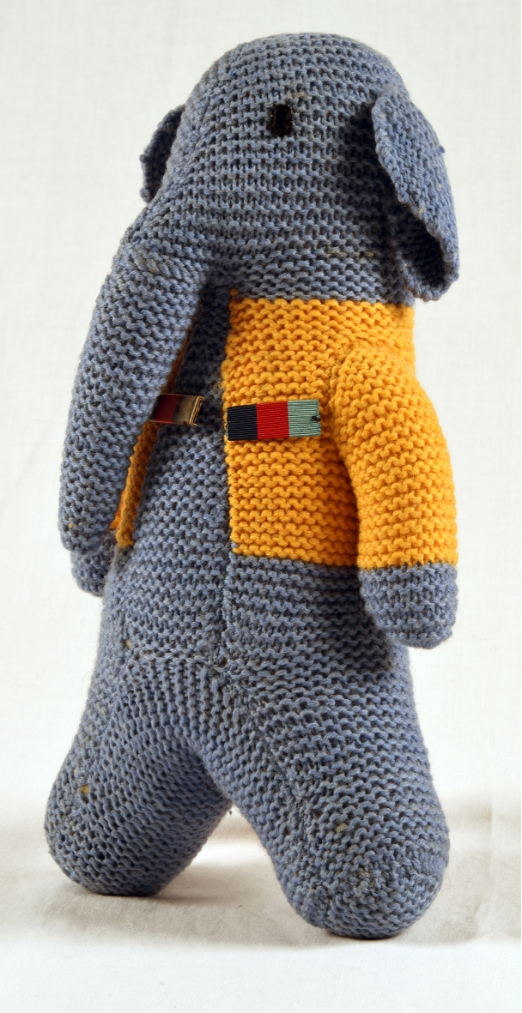
2023/008.4
Soft Toy – Elephant, “Jumbo” (C. Chambers)
Collection of the Air Force Museum of New Zealand
Jumbo
Dapper in a yellow jacket, ‘Jumbo’ the elephant belonged to Warrant Officer Charles ‘Charlie’ Chambers. The hand-knitted toy had been a mascot for the crew of Charlie’s No. 51 Squadron RAF Handley-Page Halifax bomber DT568, of which Charlie was the sole survivor when the aircraft was shot down over the Netherlands on the night of 12 June 1943. Charlie subsequently spent time in Stalag Luft 6 prisoner of war camp at Heydekrug, and endured the gruelling forced march that took place when the camp was cleared.
Jumbo was spared all those horrors. The crew mascot had not been on board when the aircraft came down because its custodian, Flying Officer G. G. Adams, had been too unwell to fly. Years later, Charlie met with Adams’ widow, Elaine, who had continued to look after Jumbo following her husband’s death in the 1950s. During the visit, she entrusted Jumbo – now wearing two 1939-1945 Star ribbons – to Charlie, as the last surviving member of Halifax DT568’s crew.

2011/082
Doll – Airman, Good Luck Charm (J.A.Hoffeins)
Collection of the Air Force Museum of New Zealand
Royal Air Force Airman Doll
On 24 September 1945, Flying Officer Jack Hoffeins took off from Espiritu Santo in the New Hebrides (now Vanuatu) as Captain of Dakota NZ3526, bound for Auckland. There was a crew of four on board, and 16 RNZAF servicemen returning home from active service in the Pacific. A little over three-and-a-half hours into the flight, contact with the aircraft was lost, and it never arrived in New Zealand. No trace was ever found, despite an exhaustive search, and the disappearance became the single greatest RNZAF loss of life in one day.
Sometime later, Jack’s Royal Air Force airman doll was found among his belongings. Jack had flown throughout World War Two, serving with the RAF in Libya and over Italy before returning to New Zealand to join No. 40 Squadron RNZAF. The airman doll had always accompanied him on flights as a mascot and good luck charm but was not on board for Jack’s final flight.
Jack’s airman doll wears the purple ribbon from his Air Force Memorial Cross.
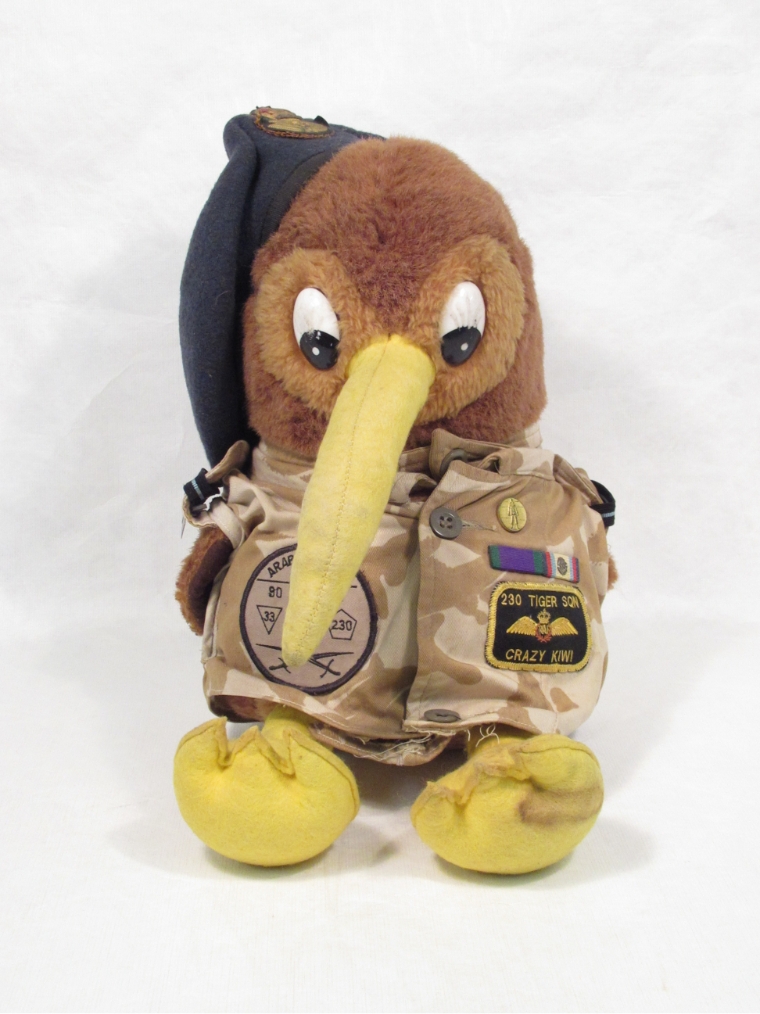
2018/187.1
Soft Toy – Kiwi, 230 Tiger Squadron, “Crazy Kiwi”
Collection of the Air Force Museum of New Zealand
'Crazy Kiwi'
‘Crazy Kiwi’ was the mascot for the No. 3 Squadron RNZAF team that flew Iroquois NZ3801 at ‘Helimeet 90’, held in the United Kingdom. As a result of new friendships forged during the competition, Crazy Kiwi was posted on exchange to No. 230 Squadron RAF, and their mascot ‘Flying Officer Tigger’ was posted to No. 3 Squadron in return.
During Crazy Kiwi’s time with No. 230 Squadron, he was deployed to the Persian Gulf for the 1990-91 Gulf War, and to Northern Ireland. He received the Gulf Medal with clasp, and the General Service Medal for his time in each theatre, while swapping his Field Service cap and Service Dress jacket for the RAF uniform that he now wears. His counterpart, Tigger, was meanwhile deployed to Australia, Samoa, Vanuatu, and Antarctica with No. 3 Squadron.
Two years later, at ‘Helimeet 92’, No. 230 Squadron returned the globetrotting Crazy Kiwi to No. 3 Squadron, who likewise handed over the well-travelled Tigger.
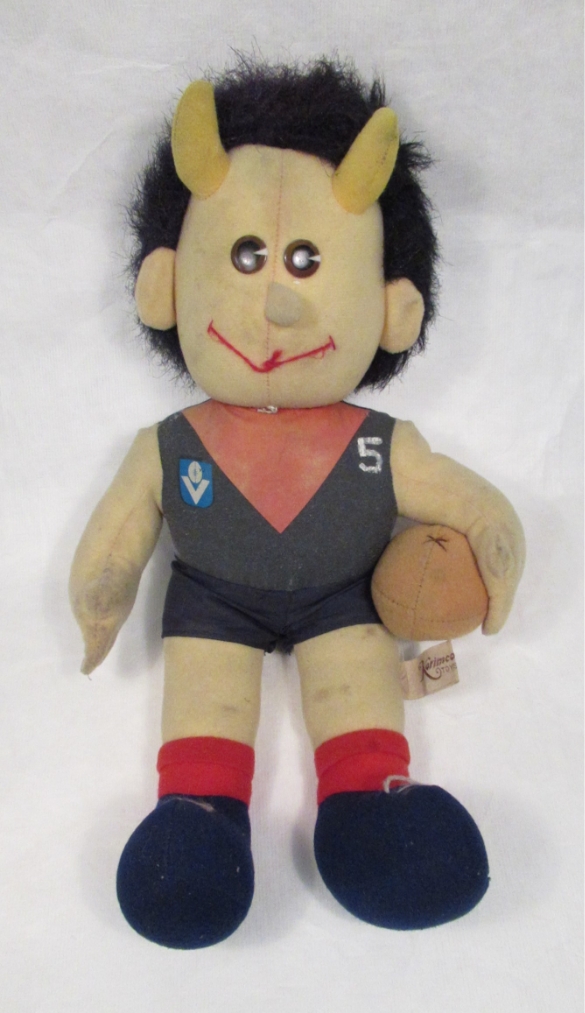
2002/201.3d
Soft Toy – Australian Rules Football Player
Collection of the Air Force Museum of New Zealand
Australian Rules Football Player
From 1991 to 2001, No. 2 Squadron RNZAF was based at HMAS Albatross in Nowra, New South Wales, where it provided Air Defence support to the Australian Defence Force.
This Australian Rules football player resided in No. 2 Squadron’s crew room. His uniform and devilish looks give away that he started life as a mascot for the Melbourne ‘Demons’ Football Club, putting him – like the New Zealanders of No. 2 Squadron – some way from home. Fittingly for a contact sportsperson, he seems to have taken a few knocks, but nothing that would see him benched to sit out a game.
Other than that, we don’t know much about this guy. Maybe you can tell us more?
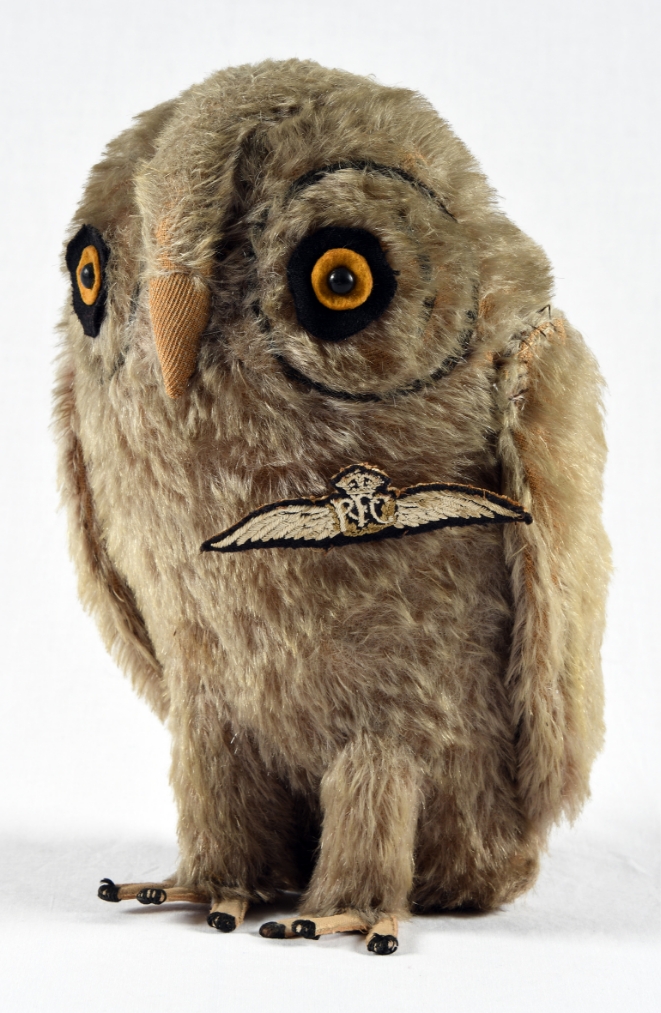
2023/001.1
Soft Toy – Owl with RFC brevet attached (F. J. Horrell)
Collection of the Air Force Museum of New Zealand
'Bill'
Captain Fredrick James ‘Jim’ Horrell served with the Canterbury Mounted Rifles at Gallipoli, then transferred to the Royal Flying Corps, training as a fighter pilot in 1917. After war service that included periods of injury and hospitalisation, Jim returned to New Zealand in 1919, continuing to attend annual pilot refresher courses at Wigram as a member of the territorial New Zealand Air Force (NZAF). During one of these courses in 1926, Jim was involved in a fatal crash while flying a Bristol Fighter, becoming the first person in military aviation service to lose their life in New Zealand.
Jim’s sturdy owl mascot sports his RFC brevet in the same general area it would appear on a uniform. After Jim’s death, his widow, Alice, kept the owl. She called it ‘Bill,’ a potential nod to her own brother, Captain William Northey Lace, who died from a gunshot wound during World War One.
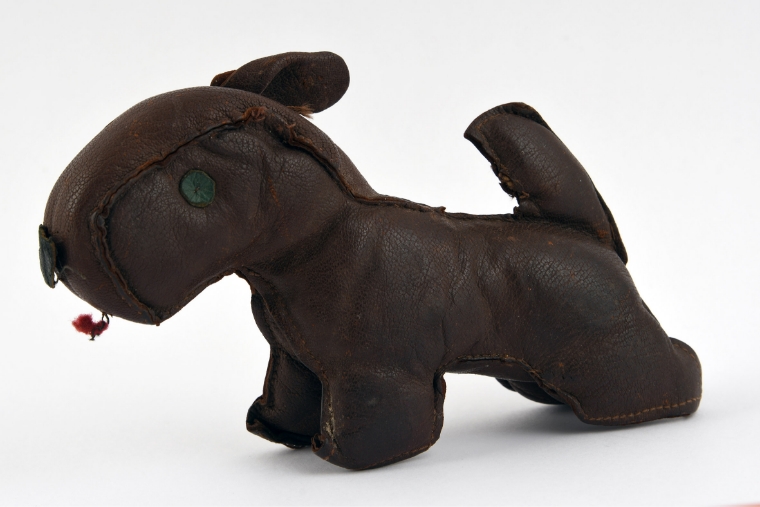
2020/102.2
Good Luck Charm – Toy Dog (F. A. Cardwell)
Collection of the Air Force Museum of New Zealand
Toy Dog
Pilot Officer Frank Cardwell served as a Navigator with RAF Bomber Command in World War Two. His first operational posting, in July 1944, was with No. 44 (Rhodesia) Squadron RAF, flying Lancasters. In November 1944, he joined No. 617 Squadron RAF, famous for its ‘Dambuster’ raids in 1943, and attacks on the German battleship Tirpitz in 1944. Frank took part in the Squadron’s last Tirpitz raid on 12 November 1944, when the ship was finally sunk.
Ever the faithful off-sider, Frank’s small leather dog accompanied him on flights to bring good luck.
More to explore



